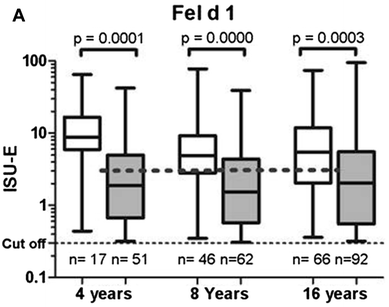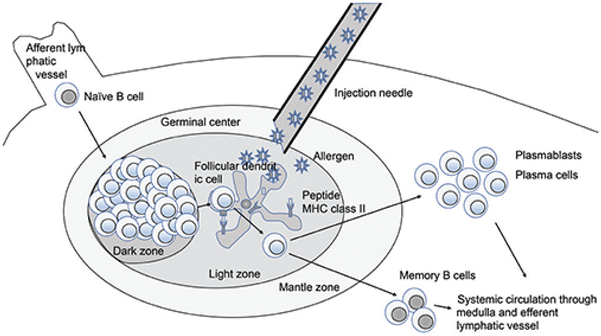An update on molecular cat allergens: Fel d 1 and what else? Chapter 1: Fel d 1, the major cat allergen
- PMID: 29643919
- PMCID: PMC5891966
- DOI: 10.1186/s13223-018-0239-8
An update on molecular cat allergens: Fel d 1 and what else? Chapter 1: Fel d 1, the major cat allergen
Abstract
Background: Cats are the major source of indoor inhalant allergens after house dust mites. The global incidence of cat allergies is rising sharply, posing a major public health problem. Ten cat allergens have been identified. The major allergen responsible for symptoms is Fel d 1, a secretoglobin and not a lipocalin, making the cat a special case among mammals.
Main body: Given its clinical predominance, it is essential to have a good knowledge of this allergenic fraction, including its basic structure, to understand the new exciting diagnostic and therapeutic applications currently in development. The recent arrival of the component-resolved diagnosis, which uses molecular allergens, represents a unique opportunity to improve our understanding of the disease. Recombinant Fel d 1 is now available for in vitro diagnosis by the anti-Fel d 1 specific IgE assay. The first part of the review will seek to describe the recent advances related to Fel d 1 in terms of positive diagnosis and assessment of disease severity. In daily practice, anti-Fel d 1 IgE tend to replace those directed against the overall extract but is this attitude justified? We will look at the most recent arguments to try to answer this question. In parallel, a second revolution is taking place thanks to molecular engineering, which has allowed the development of various forms of recombinant Fel d 1 and which seeks to modify the immunomodulatory properties of the molecule and thus the clinical history of the disease via various modalities of anti-Fel d 1-specific immunotherapy. We will endeavor to give a clear and practical overview of all these trends.
Keywords: CRD; Cat allergy; Fel d 1; Immunotherapy.
Figures




References
-
- Heinzerling LM, Burbach GJ, Edenharter G, Bachert C, Bindslev-Jensen C, Bonini S, et al. GA(2)LEN skin test study I: GA(2)LEN harmonization of skin prick testing: novel sensitization patterns for inhalant allergens in Europe. Allergy. 2009;64:1498–1506. doi: 10.1111/j.1398-9995.2009.02093.x. - DOI - PubMed
-
- Anderson MC, Baer H. Allergenically active components of cat allergen extracts. J Immunol. 1981;127:972–975. - PubMed
Publication types
LinkOut - more resources
Full Text Sources
Other Literature Sources
Miscellaneous

